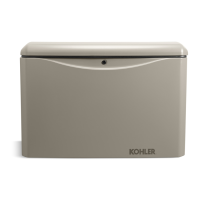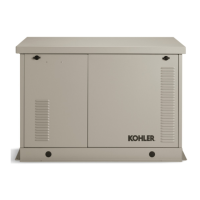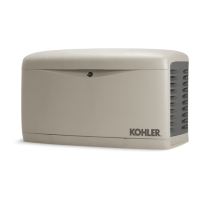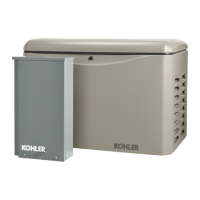What to do if Kohler Power Supply generator set engine does not crank?
- HherreratinaAug 4, 2025
If your Kohler Power Supply generator set engine doesn't crank, start by checking the battery connections and ensure they are correctly connected and tightened. A weak or dead battery could also be the culprit, so try recharging or replacing it. Inspect the engine and controller connections for open circuits, tightening any loose connections and replacing damaged harnesses or leads. Finally, check controller fuse F3 and replace it if blown; if it blows again, investigate the circuit and components.







